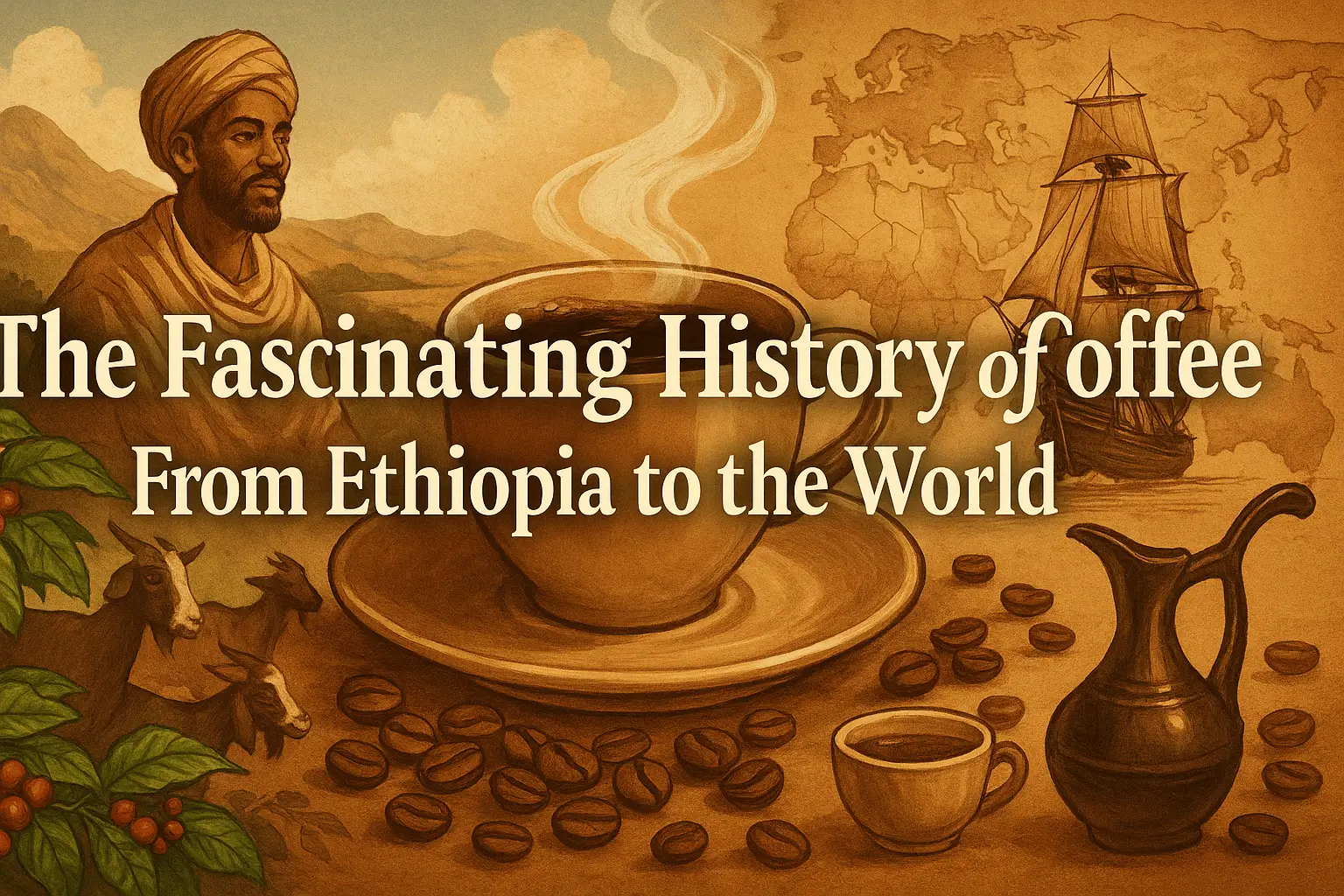Coffee is more than just a beverage. It’s a cultural symbol, an economic powerhouse, and a daily ritual for millions around the globe. But how did this humble bean travel from remote highlands in Africa to become one of the most consumed drinks worldwide? Let’s dive into the rich, intriguing history of coffee and discover how it transformed human society.
The Origins: A Legend from Ethiopia
The most famous origin story of coffee traces back to Ethiopia around the 9th century. According to legend, a goat herder named Kaldi noticed that his goats became unusually energetic after eating berries from a certain shrub. Curious, Kaldi tried the berries himself and experienced the same burst of energy. He brought the discovery to local monks, who began using the berries to stay awake during long hours of prayer.
Whether or not the tale is true, there’s strong historical evidence that coffee plants originated in the forests of Ethiopia, where they grew wild. Locals initially consumed the beans mixed with animal fat as an energy snack before coffee was ever brewed.
Coffee Spreads to the Arab World
By the 15th century, coffee had reached Yemen, where it was cultivated systematically for the first time. The beans were roasted and brewed similarly to how we prepare coffee today. Yemen became the cradle of the coffee trade, exporting beans through the port of Mocha—a name that still resonates with coffee lovers.
In Islamic culture, coffee quickly gained popularity for its stimulating effects, helping worshippers stay alert during night prayers. The drink was embraced in cities like Mecca, Cairo, and Istanbul, despite occasional attempts by religious leaders to ban it due to its stimulating nature.
Coffeehouses: The Birth of Public Culture
By the 16th century, coffeehouses, or qahveh khaneh, had sprung up across the Middle East. These establishments became social hubs where people gathered not only to drink coffee but also to exchange ideas, listen to music, play games, and discuss politics. They earned the nickname “Schools of the Wise” for their role in spreading knowledge and debate.
This new public culture alarmed some rulers, who saw coffeehouses as potential breeding grounds for dissent. Still, the popularity of these spaces only grew, setting the stage for coffee’s arrival in Europe.
Coffee Enters Europe
Coffee entered Europe in the 17th century, likely through Venetian trade routes. Initially met with suspicion—some even called it the “bitter invention of Satan”—coffee soon won over both the clergy and laypeople. In 1600, Pope Clement VIII reportedly blessed the drink, declaring it so delicious that it would be a sin to let only non-Christians enjoy it.
European cities like London, Paris, and Vienna quickly embraced the coffeehouse model. By the mid-1600s, London had over 300 coffeehouses, frequented by artists, merchants, and intellectuals. These venues inspired the birth of newspapers, stock exchanges, and even scientific societies.
The Colonial Coffee Boom
As demand exploded, European colonial powers began cultivating coffee in tropical colonies. The Dutch started growing coffee in Java (Indonesia) in the 1600s. The French brought coffee to the Caribbean, while the Portuguese introduced it to Brazil, which would later become the world’s largest coffee producer.
Coffee was not just a commodity—it was tied to colonial expansion, slave labor, and global trade. Massive plantations were established in the Americas and Africa, changing economies and societies. By the 19th century, coffee had become a global staple.
The Rise of Modern Coffee Culture
The 20th century saw massive innovation in the coffee world. In Italy, espresso machines revolutionized the brewing process. Instant coffee was invented, making the drink more accessible than ever. Coffee chains like Starbucks, founded in the 1970s, introduced specialty drinks and café experiences to a global audience.
Today, coffee culture is as diverse as the beans themselves. From artisanal third-wave cafés to traditional Turkish coffee rituals, the world has embraced countless ways to prepare and enjoy this ancient beverage.
Fun Facts About Coffee History
- Coffee bans: Coffee was banned multiple times throughout history—in Mecca (1511), Cairo (1532), and even in Sweden (1746)—due to fears of social unrest or health concerns.
- Mocha and Java: These popular coffee names originate from the Yemeni port of Mocha and the Indonesian island of Java, key centers of early coffee trade.
- First webcam: The world’s first webcam was created at Cambridge University to monitor a coffee pot!
Why Coffee’s History Still Matters Today
Understanding coffee’s history helps us appreciate not just the drink, but its role in shaping global culture, economics, and community life. It’s more than a morning ritual—it’s a symbol of shared human experience across borders and centuries.
Whether you’re sipping a dark roast in São Paulo or enjoying a cappuccino in Rome, every cup carries a legacy of exploration, connection, and transformation.
